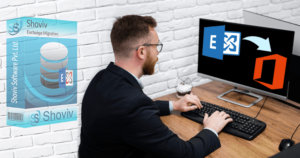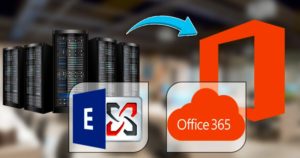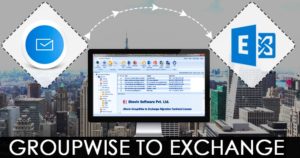Exchange Server is continually developing to satisfy the huge demands in tech sectors. The biggest communication platform by Microsoft continues launching new updates, propelled techniques, and inherent devices to move, and backup data on an enormous scale. Now, with regards to back-up, this implies getting into focus the largely held errand of the Exchange environment.
The exchange comes up with the multiple built/in features that are usually effective at performing a complete back-up of mailboxes. Because, the parameters of all of the built-in utilities will rely upon the particular mailbox volume, server stipulations, along with other allied factors.
Download a trial version of Exchange Server Backup Tool to know in a better way.
How Exchange Online protects mailbox data?
Many things can affect the functioning of the service, like hardware failure, human errors, and software conflict, and more. To make sure the data stays safe and protected even after facing above mentioned disrupts, the Exchange server uses the online technology to keep the database safe.
Accordingly, you can promptly access mailbox information in case of a disaster that influences one of the database copies. Having numerous copies of the mailbox database, the distinctive datacenters uphold the information using replication (data resiliency). If one comes up short, the affected information is moved to another server, and users experience consistent connectivity.
Why there is a need for Exchange Server Backup?
There are several reasons behind the Exchange Server Backup and backup in PST files is always preferred, some reasons for this are:
- Having a backup of mailboxes in .pst file becomes boon in case of accidental data loss.
- PST files are easy to port hence if there is a need to shift data from .pst files, it becomes an easy task.
- Data in .pst files remain in the local system of users hence in case of inaccessibility to Exchange Server, data in the local machine comes very handily.
Back-Up Exchange Server via Various Methods
Several backup options are available, but we come up with working and effective backup methods for the Exchange server. Pay a glance.
Server ‘Restore’
To recover an Exchange Server, Microsoft provides the option to recover Exchange without using the default OS Backup.
For instance, to recover the damaged Exchange Server, we need to install a new Windows Server with an exact name and service pack. The Exchange Server settings are stored in Active Directory. The Setup.exe /Mode: Recover Server command plays a key role while the installation of Exchange on a new server with the exact name. However, to perform the recovery during the installation, you need to head towards the Active Directory and reorganize the old account.
After that, you can connect with the latest Active Directory domain following a similar name. Moreover, a reboot is required to start the command and change into the folder holding Exchange ISO. The command is given under;
setup /mode:recover server /IAcceptExchangeServerLicenseTerms
Manually Export Mailboxes to PST Files
Manually exporting the mailboxes to PST files would be the simplest and old-school way to back up the Exchange Server mailbox. Doing this will keep the data stored in a structured manner and also give access to MS Outlook clients. You can simply convert the data in the PST file using the Exchange Admin Center. The process is quite easy, all you need to pick the mailbox to export and choose the Export option to PST file. The same process will apply while backing up each mailbox to PST. However, you need to be extra careful while process as the chances of losing the mailbox data is quite higher if not executed properly
Enable/disable single item recovery
While creating a new mailbox in Exchange, the single item recovery gets disable. But, if you enable this feature, it will help to restore the items from the mailbox.
Have a look for the below example, how single item recovery works.
To enable single item recovery for Single user, use the below command.
Set-Mailbox –Identity ‘Desmond Miles’ –SingleItemRecoveryEnabled $true
To disable it, type $false.
If you are not sure about the single item recovery is enabled use the following command;
Get-Mailbox –Identity ‘Desmond Miles’ | select SingleItemRecoveryEnabled
Why Exchange Server Backup manually not preferred?
- The manual method comes with lots of technicalities and if you are not technically sound; chances of data loss are high.
- Manual methods are very time-consuming as well as tedious.
- You will not find any features for smooth processing.
- Chances of Human error are very high with the manual ways.
Professionally Backup Exchange Mailboxes into PST:
If above-given methods to back the Exchange Mailbox data fails, or you find it too complex. You can use the professional approach. As manual methods have several drawbacks and take too much time also doesn’t guarantee a successful backup. Hence, using a professional tool i.e. Shoviv Exchange Server Backup and Restore would be the best bet. It is the best way that offers the direct backup of mailbox data without any difficulty.
Features of Shoviv Exchange Server Backup and Restore:
- Shoviv Exchange Server Backup and Restore lets you effortlessly backup Exchange mailboxes in PST files. This tool is built with an advanced algorithm hence smoothly backups multiple Exchange Server Mailboxes.
- The Software works on a Job-based backup process hence there is no need to create connection all-time.
- This tool lets users keep the folder hierarchy appropriately managed and kept so that the EDB emails folder is established without upsetting the order of emails and data within it.
- The software offers scheduled periodic backup options using which users can schedule the backup process.
- An advanced option for the full and incremental option is also facilitated within the Shoviv Exchange Server Backup and Restore Software.
- As the software’s name suggests, it also capable to restore data from PST files to Exchange mailboxes.
Final Words:
Several reasons are there behind the backup of Exchange Mailboxes and for this users have both manual as well as professional ways. Due to the drawbacks of manual ways, users prefer professional tools and Shoviv Exchange Server Backup and Restore is a prominent one. To check the working of the software, a free demo version is also available that allows us to back up the first fifty items per folder.
- Resolved Error 0x80070021 in Outlook - March 11, 2022
- 7 Reasons to choose a new approach for Microsoft 365 Migration - September 3, 2021
- How to Backup Emails from Outlook? – An Easy Solution - July 20, 2021




